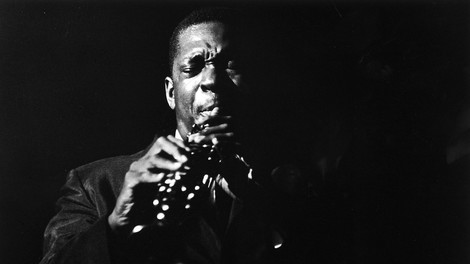Your podcast discovery platform
Curious minds select the most fascinating podcasts from around the world. Discover hand-piqd audio recommendations on your favorite topics.

piqer for: Global finds Globalization and politics Technology and society
Turkish journalist, blogger and media expert. Writes regular columns for The Arab Weekly and contributes to Süddeutsche Zeitung, El Pais and the Guardian. An European Press Prize Laureate for 'excellence in journalism' in 2014, Baydar was awarded the prestigious 'Journalistenpreis' in Germany by Südosteuropa Foundation in February 2018.
John Coltrane's Gem Of An Album Excavated From The Unknown
''Like finding a new room in the Great Pyramid...''
There could never be a better description than these words by Sonny Rollins, the great contemporary of genius musician John Coltrane. Rollins was asked what he thought of Coltrane's newly discovered 'Lost Album', which left jazz listeners, and music historians, stunned.
The date was March 2, 1963, when Coltrane, at the second peak of his career (the first one was when he played with Miles Davis a decade earlier), entered the studio with pianist McCoy Tyner, bassist Jimmy Garrison and drummer Elvin Jones – members of his legendary quartet.
The engineer, the master of sound recordings, Rudy Van Gelder, had given the tape to Coltrane, who had handed it over to his wife, Naima. He was only 36 years old; and he would die four years later by cancer. Years and years later, after the passing of Naima, the tapes were miraculously discovered, and now, they are part of music history, and the subject of deep joy.
In the liner notes to “Both Directions at Once: The Lost Album,” the historian Ashley Kahn describes the quartet’s work from this era as “injecting the ecstatic message of the black church into the polite world of jazz: Sunday morning on a Saturday night.” That precise tension—rhapsodic devotion versus a kind of measured elegance—is present, in one form or another, in nearly every great work of American art.
Where does the title come from?
The official word is that it comes from something Coltrane once said to the saxophonist Wayne Shorter, “about starting a sentence in the middle, and then going to the beginning and the end of it at the same time . . . both directions at once.”... Shorter has also said that he and Coltrane would occasionally slam out clusters of notes on the piano, and Coltrane would say, “See if you can find a story in there!”
So, now, we feel richer, having discovered a golden moment, the zenith of the free form captured, brought to life. 'Lost album' by John Coltrane adds to the healing ritual, in a world that only gets more confusing and lost.
